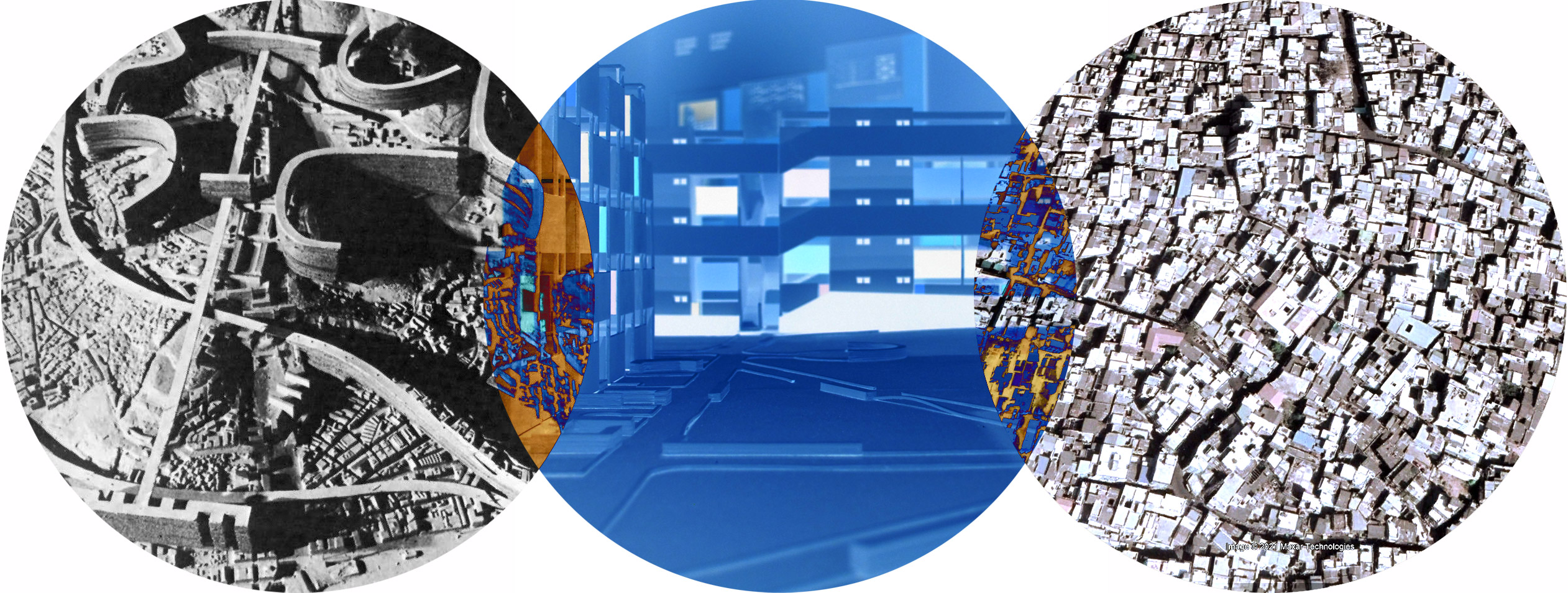OPEN CALL
Deadline: September 10, 2021
Venue: Tashkent, Uzbekistan
Time: October 27-30, 2021
The National Pavilion of Uzbekistan at the Venice Biennale of Architecture 2021: Public Events
International conference on
Modernist architecture and the historic Islamicate city:
topics / problems / relevance
Conference issues
Due to the later arrival of modernisation in some regions, the cores of the medieval cities of the Islamicate world (IW) - called medina, rabat, shahristan - preserved not only their urban structure better than other regions, but also the specific type of social ties between residents living in the communities contained within the boundaries of these traditional urban quarters. Modernist architects tried to interact with these settlements by proposing new types of housing and city blocks, and drawing inspiration from vernacular techniques and the logic governing urban planning. Thus, the influences were mutual: modernist architecture modified the historical cities of the IW, which in turn influenced the strategies and forms of modernist architecture.
Their interaction unfolded over the course of three periods: colonial, postcolonial, and the Soviet era (the latter was not reduced to the sum of coloniality and postcoloniality, but contained elements of both phenomena). In all three cases, modernist architecture, on the one hand, insisted on the universality of its language, and, on the other, sought to adapt to the conditions of non-Western societies, and develop particular approaches to them. A comparison of these approaches in different contexts can contribute to a better understanding of general and local architectural histories.
Comparative studies of regional modernisms of the IW are also productive. Already, in the 1950s-1960s, architects themselves were actively interested in the work of their colleagues in similar climatic and cultural zones. Evidently, this process was reciprocal: for example, the Soviet and, in particular, the Central Asian architectural press occasionally published materials about the architectural innovations of the Maghreb countries, Iran, Afghanistan, Pakistan, and India. In addition, delegations from Asian and African countries often visited Tashkent and other Uzbek cities, which have become the official showcase of representations of the "Soviet East". Within the framework of the conference, we would like to identify in detail the structural and episodic connections of these contexts.
Presently, there also arise questions and critiques of the modernist experience of working with historical heritage. This is especially relevant because modernist architecture itself is universally recognised as a part of history, and its very specimens are themselves monuments of historical architecture. The conclusions drawn from these lessons are closely linked to social projects and visions of the future, which evolve along with governments and society. How will the historical medinas / rabats / shahristans develop? Will priority be given to global tourism or domestic development? How can we decolonise the view of historical centres coded by Orientalist optics since the 19th century? How are we to avoid the total commercialisation of the use of the historical environment?
Within the framework of these perspectives, we invite historians and theorists of architecture and urban planning, architects, sociologists, and philosophers to formulate paper abstracts, which will be related to the stated problems on materials from the Maghreb countries, the Near and Middle East, Central and Southeast Asia. To facilitate conceptual exchanges, we ask the presenters to relate their suggestions to some of the following topics:
How has modernist architecture contributed to the historic cities of Islam? Has it modernised the life of local communities? How can you describe the modernisation it brought into local contexts?
What have traditional Islamicate settlements given to modernist architecture? What were the planning, spatial, and morphological solutions of modernism derived from local contexts? What influences from other regionalisms were experienced by modernist architects working in different parts of the IW?
What lessons can be learned from the modernist experience of modern architects working in the historical cities of Islamicate countries? How are we to deal with these historic cities and their modernist heritage today?
The organisers invite specialists interested in taking part in this forum - architectural historians, architects, sociologists, and philosophers without regional restrictions - to send abstracts of up to 300 words to info@acdf.uz (CC’ing boris@colba.net and m.badalova@acdf.uz ) until September 15. The organisers will announce the conference programme by October 1. Travel and accommodation costs for the speakers will be covered by the organisers of the conference.
Conference languages: English, French, Russian, Uzbek (simultaneous interpretation will be provided for participants and listeners).



